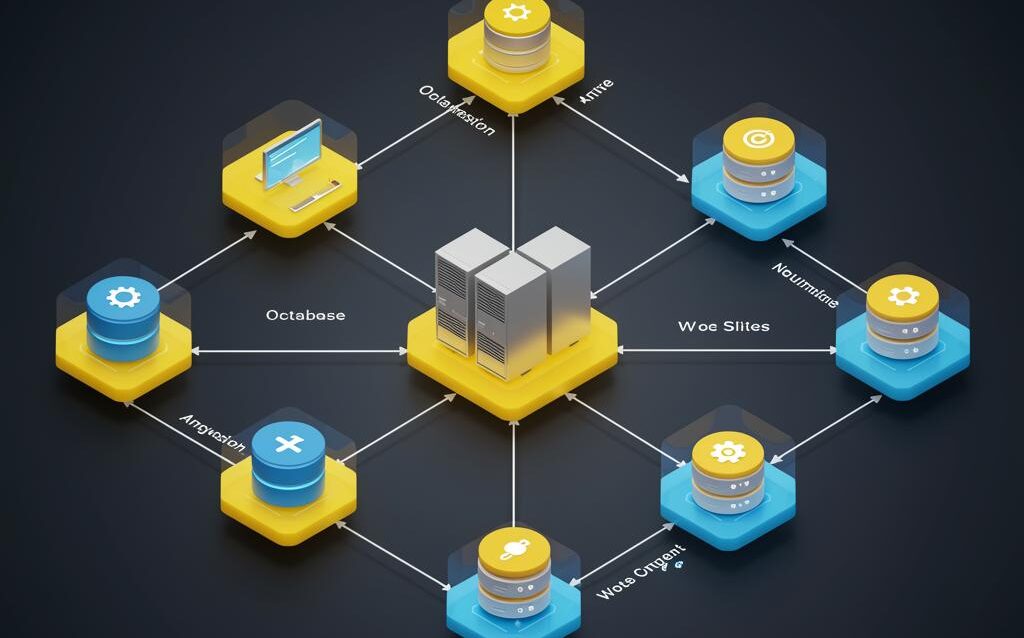Scalable WordPress: Architectures for High-Traffic Sites
Building Scalable WordPress Architectures for High-Traffic Websites
WordPress, while user-friendly and versatile, can face performance challenges when dealing with high traffic. A standard installation often isn’t enough to handle a large influx of visitors. This blog post delves into how to build scalable WordPress architectures capable of handling significant traffic loads, ensuring optimal performance and a smooth user experience.
Understanding Scalability Challenges in WordPress
Before diving into solutions, it’s crucial to understand the common bottlenecks that arise with high-traffic WordPress websites:
- Database Queries: WordPress relies heavily on database queries. Excessive or poorly optimized queries can slow down the entire site.
- PHP Processing: PHP processing, especially with complex themes and plugins, can consume significant server resources.
- Static Asset Delivery: Serving static assets (images, CSS, JavaScript) directly from the server can be inefficient.
- Session Management: Managing user sessions, particularly for logged-in users, can add overhead.
- Caching Inefficiency: Inadequate caching strategies lead to repeated processing and database queries for the same content.
Implementing Effective Caching Strategies
Caching is paramount for scalability. It reduces the load on the server by serving pre-generated content to visitors.
Page Caching
Page caching stores the entire HTML output of a page and serves it to subsequent visitors without hitting the database or PHP. Popular plugins like WP Rocket, WP Fastest Cache, and LiteSpeed Cache are excellent choices.
Object Caching
Object caching stores the results of database queries, reducing the need to repeatedly query the database for the same information. Redis and Memcached are commonly used object caching solutions. Integrating these with WordPress often requires a plugin (e.g., Redis Object Cache).
Browser Caching
Browser caching instructs the visitor’s browser to store static assets locally, reducing the number of requests to the server for subsequent page loads. This can be configured through your web server’s configuration (e.g., .htaccess for Apache, configuration files for Nginx) or via a plugin.
Optimizing the Database for Performance
A well-optimized database is crucial for a fast WordPress site. Here are some key strategies:
Database Optimization
Regularly optimize the database tables using tools like phpMyAdmin or plugins like WP-Optimize. This removes overhead and improves query performance.
Index Optimization
Ensure that appropriate indexes are in place on frequently queried database columns. This speeds up data retrieval. Analyze slow queries to identify opportunities for index optimization. Consider using a plugin that helps identify and suggest missing indexes.
Database Caching
As mentioned earlier, object caching is a form of database caching. Ensure it is configured correctly to cache database query results effectively.
Limiting Post Revisions
WordPress automatically saves post revisions, which can clutter the database. Limit the number of revisions stored or disable them entirely to reduce database size.
Leveraging Content Delivery Networks (CDNs)
A CDN distributes your website’s static assets (images, CSS, JavaScript) across multiple servers located around the world. This reduces latency and improves loading times for visitors regardless of their location.
Choosing a CDN
Popular CDN providers include Cloudflare, Amazon CloudFront, and MaxCDN. Consider factors like pricing, geographic coverage, and features when selecting a CDN.
CDN Integration
Integrate your WordPress site with the chosen CDN using a plugin or by manually configuring the CDN’s settings in your theme and plugins. Ensure that all static assets are served from the CDN.
Benefits of Using a CDN
- Reduced Latency: Visitors receive content from the server closest to them.
- Improved Loading Times: Static assets are delivered faster.
- Reduced Server Load: The CDN handles the delivery of static assets, freeing up server resources.
- Increased Availability: CDNs provide redundancy and resilience against server outages.
Choosing a Scalable Hosting Solution
The hosting environment plays a vital role in scalability. Shared hosting environments are often insufficient for high-traffic websites.
Managed WordPress Hosting
Managed WordPress hosting providers offer optimized environments specifically for WordPress. They often include features like automatic updates, backups, and caching, as well as expert support.
Cloud Hosting
Cloud hosting provides scalable resources on demand. You can easily increase or decrease resources as needed to accommodate traffic fluctuations. Amazon Web Services (AWS), Google Cloud Platform (GCP), and DigitalOcean are popular cloud hosting providers.
Load Balancing
Load balancing distributes traffic across multiple servers, preventing any single server from becoming overloaded. This is essential for high-traffic websites that require high availability and performance.
Conclusion
Building a scalable WordPress architecture requires a multi-faceted approach that addresses caching, database optimization, content delivery, and hosting. By implementing the strategies outlined in this blog post, you can ensure that your WordPress website can handle high traffic loads while maintaining optimal performance and a positive user experience. Remember to monitor your website’s performance regularly and adjust your architecture as needed to accommodate future growth.

